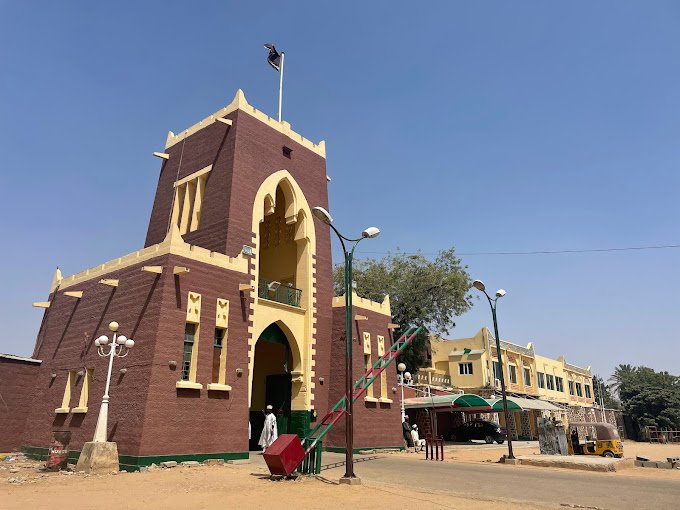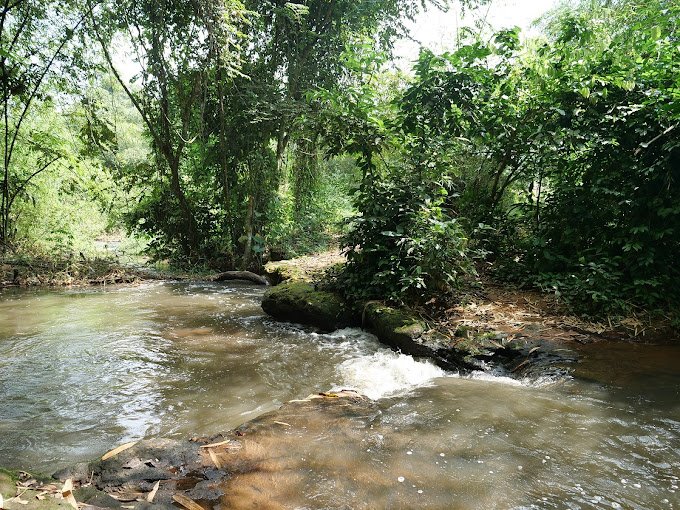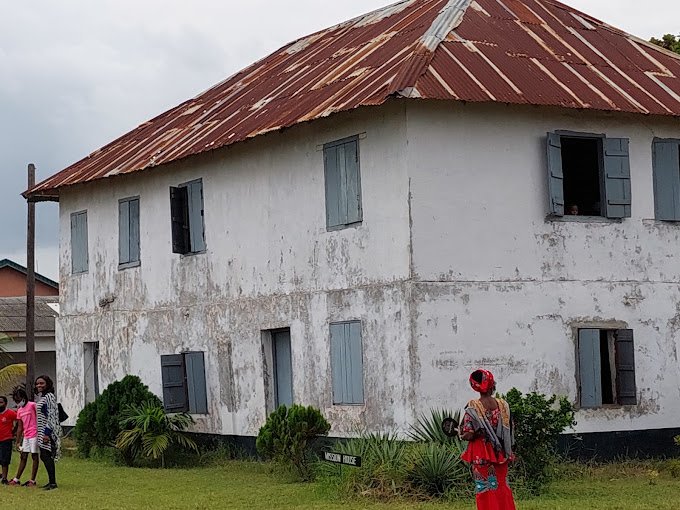
Contents
- Historical Landmarks in Nigeria and Their Locations
- 1. Erin-Ijesha/Olumirin Waterfall – Erin-Ijesha, Osun State
- 2. Emir of Kano Palace – Kano, Kano State
- 3. Ogbunike Caves – Ogbunike, Anambra State
- 4. Tafawa Balewa Square (TBS) – Lagos, Lagos State
- 5. The Walls of Benin – Benin City, Edo State
- 6. The First Storey Building in Nigeria – Badagry, Lagos State
- 7. National War Museum – Umuahia, Abia State
- 8. Oduduwa Grove – Ile-Ife, Osun State
- 9. The Ancient Nok Settlement – Jaba, Kaduna State
- 10. Idanre Hills – Idanre, Ondo State
- 11. Slave Museum – Calabar, Cross River State
- 12. Osun-Osogbo Sacred Grove – Osogbo, Osun State
- 13. Sukur Cultural Landscape – Adamawa State
- 14. Arochukwu Long Juju Shrine – Abia State
- 15. Kainji National Park – Niger State
- 16. Owu Falls – Kwara State
- 17. Oba of Benin Palace – Edo State
- 18. Lokoja Confluence Point – Kogi State
- 19. Gidan Makama Museum – Kano State
- 20. Baro Empire Hill – Niger State
- 21. Surame Cultural Landscape – Sokoto State
- 22. Agodi Gardens – Oyo State
- 23. Queen Amina’s Wall – Kaduna State
- 24. Ile-Ife Museum – Osun State
- 25. Point of No Return
- 26. Jaekel House, Lagos
- 27. Third Mainland Bridge, Lagos
- 28. National Mosque, Abuja
- 29. River Niger Bridge, Onitsha-Asaba
- 30. St. George’s Hall, Lagos
- 31. Mary Slessor’s House, Calabar
- 32. Cathedral Church of Christ, Lagos
Historical Landmarks in Nigeria and Their Locations
1. Erin-Ijesha/Olumirin Waterfall – Erin-Ijesha, Osun State
Olumirin Waterfall, located in the town of Erin-Ijesha in Osun State, is a stunning natural landmark with historical significance. It is believed to have been discovered in 1140 AD by Akinla, a granddaughter of Oduduwa, during the migration of the Ife people. The waterfall has seven levels, with each step revealing a more breathtaking view. The locals consider it a sacred site, and believe it has purifying powers. Olumirin attracts tourists and pilgrims alike, making it one of Nigeria’s most visited natural Tourist sites.
2. Emir of Kano Palace – Kano, Kano State
The Emir of Kano’s Palace is one of the most iconic cultural and historical landmarks in Northern Nigeria. Situated in the heart of Kano, this palace is a testament to the ancient civilization of the Hausa people. The Kano Emirate traces its history back centuries, and the palace has been the seat of power for generations of Emirs. It is a stunning example of traditional Hausa architecture and continues to play a significant role in the cultural and political life of Kano State.
See>>> List Of National Monuments in Nigeria
3. Ogbunike Caves – Ogbunike, Anambra State
The Ogbunike Caves in Anambra State are an ancient natural wonder with deep historical and spiritual importance to the local people. These caves have been used for centuries for religious ceremonies and as a place of refuge. The site is a UNESCO World Heritage Site and features a large open chamber that leads to several tunnels and passages. Visitors descend 317 steps to access the caves, making it not only a historical site but also a physical adventure.
4. Tafawa Balewa Square (TBS) – Lagos, Lagos State
Located in the bustling city of Lagos, Tafawa Balewa Square (TBS) holds an important place in Nigeria’s modern history. It was built in 1972 and serves as a monumental venue for public events and national ceremonies. The entrance is flanked by sculptures of four white horses, symbolizing strength, and seven red eagles, symbolizing dignity. TBS has witnessed several key events in Nigeria’s political history, including the 1960 Independence celebrations.
5. The Walls of Benin – Benin City, Edo State
The ancient Walls of Benin are a marvel of ancient African engineering, standing as one of the largest man-made structures in the world. These walls, built to protect the Kingdom of Benin, spanned about 16,000 kilometers. The construction of the walls began as early as 800 AD and continued until the mid-15th century. Despite British colonial forces dismantling parts of the wall during their invasion in 1897, the remnants are still visible today and serve as a symbol of the kingdom’s architectural and cultural achievements.
6. The First Storey Building in Nigeria – Badagry, Lagos State
Nigeria’s first storey building, located in Badagry, Lagos State, stands as an enduring symbol of colonial-era architecture and the spread of Christianity. Built between 1842 and 1845 by Reverend Henry Townsend of the Church Missionary Society (CMS), the building was part of the mission to introduce Western education and religion to Nigeria. Today, the structure is a museum and remains a significant piece of Nigerian history, attracting visitors who want to experience the country’s colonial past. See 7 Museums in Lagos and Their Locations
7. National War Museum – Umuahia, Abia State
The National War Museum in Umuahia, Abia State, was established to document and preserve Nigeria’s military history, particularly its civil conflicts, including the Nigerian Civil War (Biafran War) of 1967-1970. The museum houses relics and artifacts from various wars, showcasing a wide range of military equipment, including aircraft, naval vessels, and armoured tanks. It serves as a reminder of the resilience of the Nigerian people and the journey towards national reconciliation.
8. Oduduwa Grove – Ile-Ife, Osun State
Oduduwa Grove, also known as the Oduduwa World Temple, is located in Ile-Ife, a city that holds deep spiritual significance in Yoruba culture. This site marks the spot where Oduduwa, the progenitor of the Yoruba race, is believed to have descended to Earth via a chain from the heavens. He founded Ile-Ife, which remains one of the most important cities in Yoruba history. A statue of Oduduwa stands at the site, holding the chain and staff, symbolizing the creation of the Yoruba civilization.
9. The Ancient Nok Settlement – Jaba, Kaduna State
The Nok Culture, one of the earliest known civilizations in Nigeria, flourished around 1000 BC in what is now Jaba, Kaduna State. Archaeologists unearthed remarkable terracotta sculptures that reveal a sophisticated society with advanced art and technology for its time. The Nok terracotta figures are some of the oldest artworks found in Africa and are displayed in museums worldwide. Visiting the Nok settlement allows visitors to connect with one of the most ancient cultures on the African continent.
10. Idanre Hills – Idanre, Ondo State
Idanre Hills in Ondo State is one of Nigeria’s most captivating natural and cultural landmarks. The hills, which rise sharply from the plains, contain historical and cultural sites, including ancient palaces, courts, and religious shrines. The hills are not only an impressive natural wonder but also a place of great spiritual importance for the local people. A UNESCO World Heritage Site, Idanre Hills attracts thousands of visitors who come to explore the 660 steps leading to the summit and to enjoy the breathtaking views.
11. Slave Museum – Calabar, Cross River State
Calabar was a major slave port during the Transatlantic Slave Trade, and the Slave Museum located in the city serves as a poignant reminder of this dark chapter in history. The museum houses relics from the era, including shackles, chains, and currencies used to trade human lives. It documents the stories of the African people who were sold into slavery and shipped across the Atlantic. The museum is a stark reminder of the resilience of the African spirit and a call to never forget the injustices of the past.
12. Osun-Osogbo Sacred Grove – Osogbo, Osun State
The Osun-Osogbo Sacred Grove, a UNESCO World Heritage Site, is a sacred forest along the banks of the Osun River in Osogbo, Osun State. The grove is dedicated to Osun, the Yoruba goddess of fertility, and contains numerous shrines, sculptures, and artworks created in her honor. It is one of the few remaining sacred groves in Nigeria, symbolizing the close relationship between nature and spirituality in Yoruba culture. Every year, the Osun-Osogbo Festival attracts worshippers and tourists from all over the world.
13. Sukur Cultural Landscape – Adamawa State
Located in Adamawa State, the Sukur Cultural Landscape is a UNESCO World Heritage Site recognized for its terraced fields, traditional iron-smelting furnaces, and a unique palace. The site reflects the rich history and lifestyle of the Sukur people, who have maintained their customs for centuries. Visitors can explore the royal palace perched on a hill with stunning views of the surrounding valley.
14. Arochukwu Long Juju Shrine – Abia State
The Arochukwu Long Juju Shrine, located in Arochukwu, Abia State, was once a major religious and judicial center for the Aro people. Historically used as an oracle for justice, this mystical shrine played a crucial role during the slave trade era. It features tunnels and caves of spiritual significance.
15. Kainji National Park – Niger State
Kainji National Park in Niger State is one of Nigeria’s first national parks. Besides its wildlife, the park is home to the Kainji Dam, built in the 1960s. The dam is significant for its contributions to Nigeria’s power generation and irrigation, while the surrounding archaeological sites showcase ancient Nigerian civilizations.
16. Owu Falls – Kwara State
Owu Falls, located in Kwara State, is one of the highest waterfalls in West Africa. It holds cultural and historical significance for the Owu people, who believed the waterfall had spiritual powers. The breathtaking landscape and serene environment make it a popular destination for history enthusiasts and nature lovers. See Other Waterfalls in Nigeria and their location.
17. Oba of Benin Palace – Edo State
The Oba of Benin Palace, located in Benin City, Edo State, is a historic royal residence that reflects the cultural and political power of the ancient Benin Kingdom. The palace, filled with artworks, ceremonial relics, and ancient artifacts, is a testament to the grandeur and traditions of the Benin people.
18. Lokoja Confluence Point – Kogi State
Lokoja, in Kogi State, is the meeting point of Nigeria’s two major rivers, the Niger and the Benue. This landmark played a significant role during the colonial era as a hub for explorers and colonial administrators, including British explorer Mungo Park. Lokoja was also Nigeria’s first administrative capital.
19. Gidan Makama Museum – Kano State
Gidan Makama Museum in Kano State is a former palace turned museum, showcasing Kano’s rich history and the legacy of its traditional rulers. The museum has eleven galleries filled with artifacts, costumes, and exhibits detailing the cultural heritage of the Hausa people and the Kano Emirate.
20. Baro Empire Hill – Niger State
Baro Empire Hill in Niger State offers a panoramic view of the River Niger and was an essential location for the transportation of goods during the colonial era. The Baro railway station, built by the British, still holds remnants of colonial infrastructure and highlights the historical importance of Nigeria’s transportation history.
21. Surame Cultural Landscape – Sokoto State
The Surame Cultural Landscape in Sokoto State was the capital of the Kebbi Kingdom in the 16th century. The site features advanced architectural designs and fortifications, making it a testament to the ingenuity of the Kebbi people. The ruins of ancient buildings and walls remain visible today.
22. Agodi Gardens – Oyo State
Agodi Gardens in Ibadan, Oyo State, is a colonial-era garden that blends history and recreation. The garden was used for ceremonial gatherings and government functions in the past and is now a popular tourist destination. Visitors can enjoy its natural beauty along with its historical significance. See Fun In Ibadan: 15 Popular Places For Hangout
23. Queen Amina’s Wall – Kaduna State
Queen Amina’s Wall, located in Zaria, Kaduna State, was built by the famous warrior queen, Amina of Zazzau, during her 16th-century reign. The walls were constructed to protect the city of Zaria, and remnants still stand today, symbolizing the strength of one of Nigeria’s most iconic historical figures.
24. Ile-Ife Museum – Osun State
Located in Ile-Ife, Osun State, the Ile-Ife Museum preserves artifacts from the ancient Yoruba Kingdom of Ife. The museum displays centuries-old bronze, terracotta, and stone sculptures, showcasing the sophisticated craftsmanship of the Yoruba people and their spiritual heritage.
25. Point of No Return
Conclusion
Nigeria’s historical landmarks and sites testify to its rich and various cultural heritage. These locations are not just places to visit; they are symbols of the country’s ancient civilizations, spiritual traditions, and national history. Each site offers a unique glimpse into the past, making Nigeria a treasure trove for history enthusiasts, tourists, and anyone who wishes to understand the complex cultural fabric of the nation. From ancient groves and caves to war museums and colonial buildings, Nigeria’s historical landmarks are enduring monuments to the country’s storied past.
- Follow me on TikTok for quick tips and behind-the-scenes tours
- Subscribe to my YouTube channel for in-depth videos and property showcases
- Follow me on Facebook for updates, listings, and real estate advice





Leave a Reply